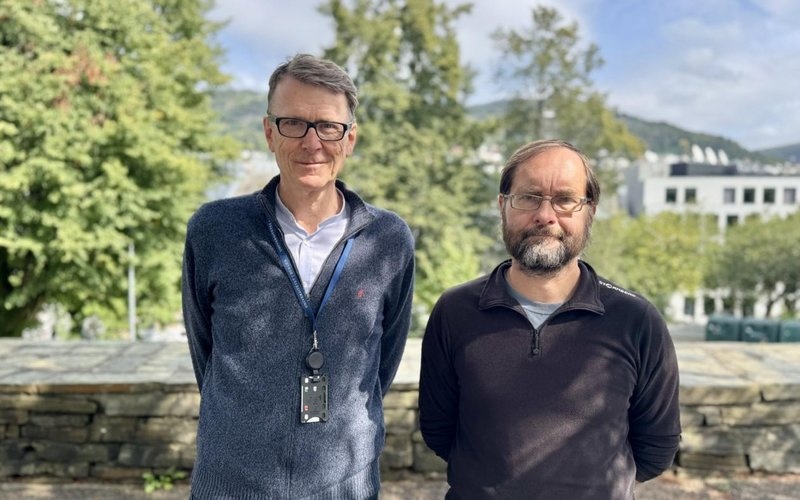 Researchers Ivar Rønnestad and Sergei Budaev |Credits: Andrea Maguliani
Researchers Ivar Rønnestad and Sergei Budaev |Credits: Andrea Maguliani
Norwegian scientists are developing a ‘digital twin’ model designed to improve feeding strategies in salmon and trout farming, with the aim of reducing waste and enhancing fish welfare.
The initiative, called FishMet, is led by University of Bergen professor Ivar Rønnestad and researcher Sergei Budaev from the Department of Biological Sciences. Originating from a collaboration between UiB and Vestlandets Innosjonsselskap, FishMet is currently at a low Technology Readiness Level but is already available for exploratory licensing through VIS.
At its core, FishMet is a “visual fish” that simulates appetite, digestion, metabolism, and growth by integrating biological and environmental data. Unlike black-box machine learning systems, the model is based on a conceptual framework of neurophysiological feedback loops controlling fish appetite.
Inputs such as fish size, feed type and schedule, water temperature, oxygen levels, and behavioural data can be processed to estimate feed intake, gut transit time, growth rates, feed conversion efficiency, and even indicators of stress of feeding motivation. The system is modular, stochastic, and able to model both individual fish and whole populations. It can be accessed via an open API and server-based deployment for testing decision-support tools.
“We aim to create a transparent digital salmon that combines AI with decades of biological knowledge, serving both as a research tool and practical aquaculture predictor, especially in situations lacking data,” said Sergei Budaev.
The modular builds on years of experimental work by Rønnestad and Budaev’s research groups on the physiological mechanisms regulating appetite. Their studies have explored how gut-brain signaling, digestion rate, and neurohormones influence feeding-insights that underpin FishMet’s algorithms.
Pilot tests have so far shown promising predictive accuracy, including estimates of gut transit time in rainbow trout (Oncorhynchus mykiss) and growth performance in Atlantic salmon (Salmo salar). While further validation is required, researchers note that potential benefits include reduced feed waste, improved growth efficiency, and a lower environmental impact in salmon farming.
“FishMet remains an early-stage concept, but its biology-rooted transparency could give it advantages over opaque, purely data-driven systems. Future development may expand its scope to additional fish species or life-stage transitions such as smoltification or maturation control,” the researchers states.


